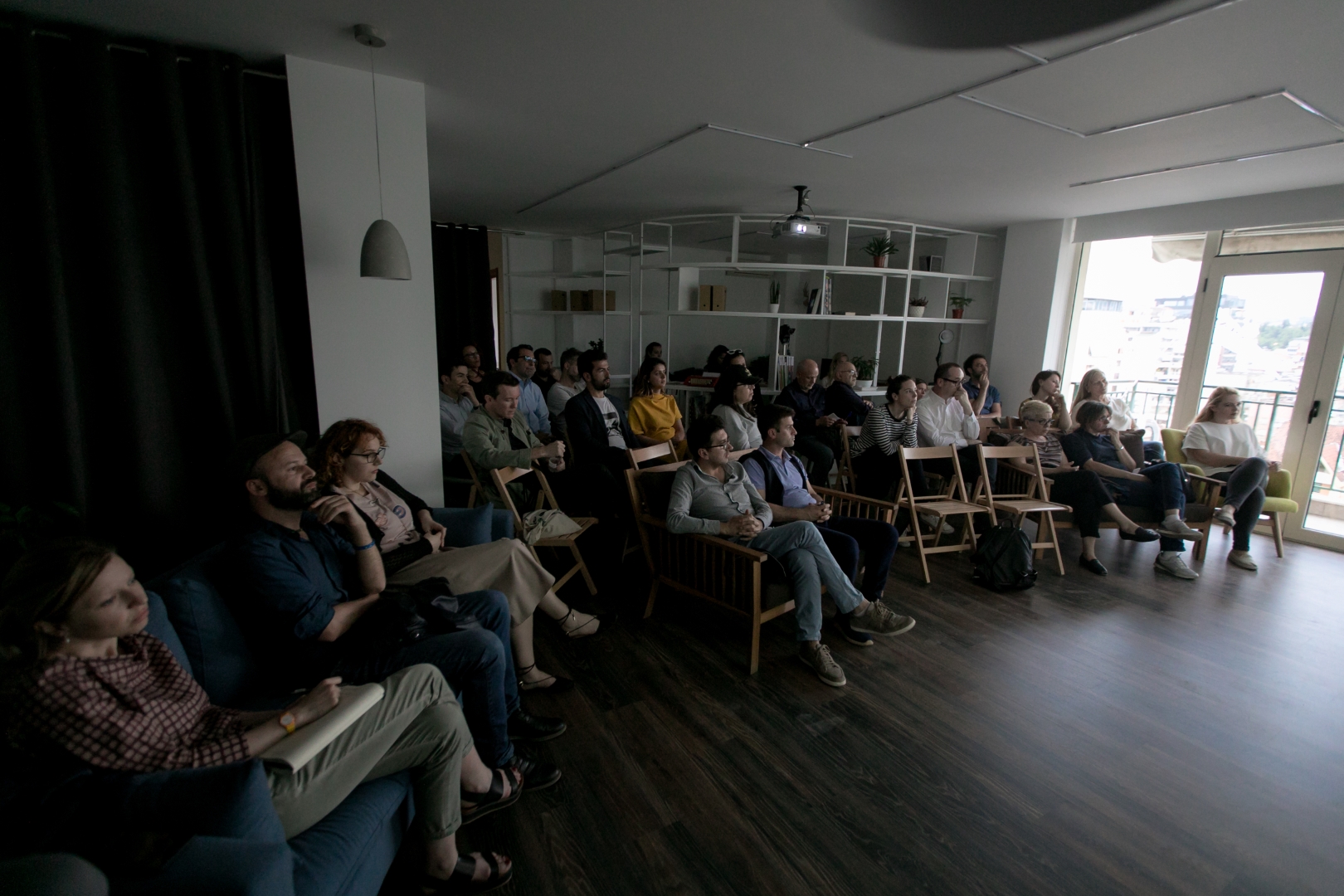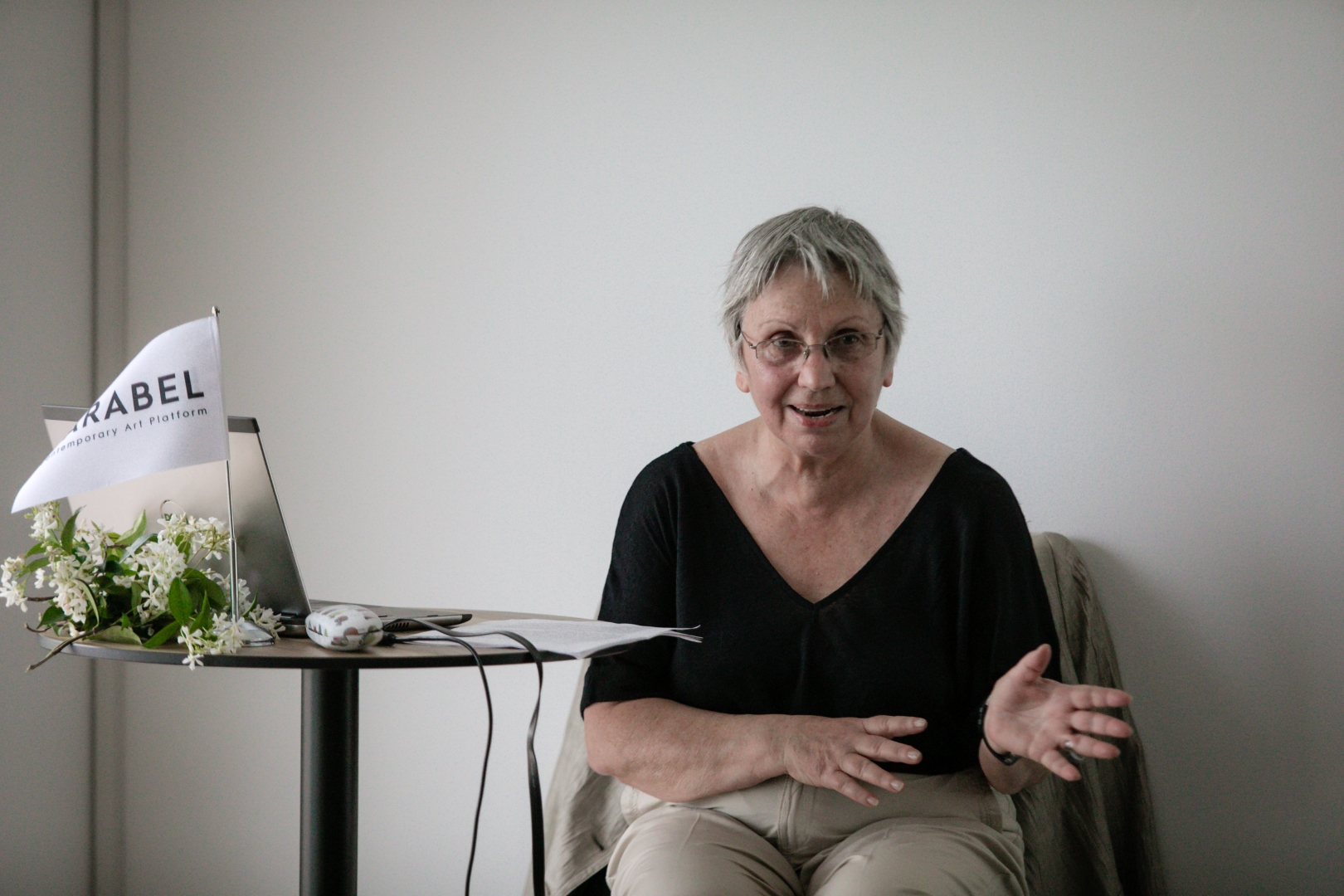Eleni Laperi, a researcher and critic of visual art, invited for an interview / conversation at “Harabel”, initiates the discourse with the argument of limited number of studies on Albanian visual art as well as documentary shortcomings.

The installation of a Bulgarian artist, Pravdoliub Ivanov in 1998 serves for the researcher as a way of creating a connection between what is being transmitted by the installation – a set of pots connected in series to a power source and through which steam is released into space – and what has happened and is happening with the abuse of energy of the Albanian individual in time, in the Albanian artistic space and beyond. Going through the reflection of Albanian visual art and related problems, the researcher starts with the artists such as Kolë Idromeno, Vangjush Mio, OdisePascali and so on.
Eleni Laperi recalls that in May 1931 the first art exhibition was held in Tirana at national level, where most of the famous painters and sculptors attended. The exhibition marked a great success and inspired the creation of the “Friends of Art” society, the goal of which was the establishment of a national pinakothek. In January 1932, a drawing school was founded in Tirana, initially supported by Andrea Kushi and later directed by Italian artist Mario Ridola.
The period of socialist realism – the period of self-censorship, which automatically brought the underestimation of the individual, despite the proletarian optimism – characterized as an experimental period,not surprisingly, is mentioned by the researcher with revolt about the concern that a clique of individuals can experiment with a nation and not be held responsible for the consequences which are still being experienced today.
Without a nihilist stance, Eleni Laperi admits that the period of socialist realism had its own exceptions, because there were artists who questioned the system in question, but the lack of direct connection with contemporary international art left its mark on the formation itself.
Eleni Laperi mentions the opening of a number of art galleries in the 90s, such as: XXI Gallery, P & G Gallery, Art Gallery, Zen Gallery, etc. as the first attempt to establish freedom of creativity. The period mentioned lead to the phenomenon of curation (the presence of the curator), which was met with suspicion and disbelief by many. Mediums like photography, video or installation were also met with disbelief.
Eleni Laperi describes the forthcoming period of ’97, a time which once again highlighted how easily Albanian energy is misused, losing time and trace in time.
Regarding the highest institution of visual arts in Albania, the researcher states that the NAG (National Art Gallery ) showed a positive turn under the direction of Gëzim Qendro. During this period, the first Albanian contemporary art magazine (1997), “PamorArt” was established, which did not have longevity as many similar ventures (“Marubi” photography contest and Tirana’s biennial). Meanwhile, the researcher expressed dissatisfaction with the nonsequential institutional arrangements in regards to visual art.
Eleni Laperi appreciates the opening of new artistic spaces such as: Harabel Contemporary Art, TICA, Tirana Art Lab, Zeta, Zenith, Brick, Art Space Base, Ditart, Art-House in Shkodra and all these institutions as signs of a will good to change the atmosphere.



